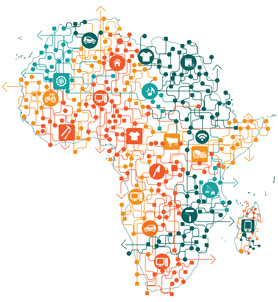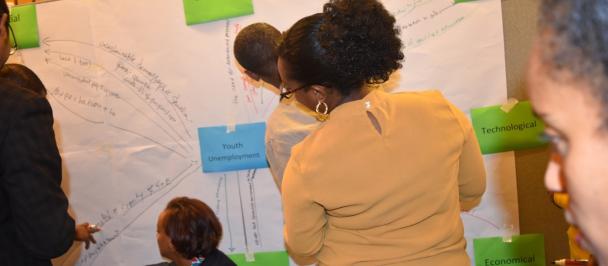Increased participation in global value chains is expected to bring good news to Africa by catalyse the diversification of its economic, increasing domestic resource mobilisation and improving investments in critical infrastructure.
Despite opportunities for higher value chains and growing exports to the rest of the world, Africa’s participation in global value chains still focuses mainly on low value activities.
This is according to the African Economic Outlook 2014 (AEO) on Global Value Chains & Africa’s Industrialization, launched in Addis Ababa on 18 July 2014, which underscored that in the face of a fast globalizing world, industrial production is increasingly becoming highly fragmented.
“In this new production and trade reality, it will no longer be necessary for African countries to create entire industries,” noted African Development Bank’s Eastern Africa Regional Director Gabriel Negatu. “Instead, countries will now be able to integrate into the global value chain by specializing and offering specific skills or products to an expanding global production network. This ‘new normal’ will open up a new and quicker route for African countries to capture a growing percentage of the global value chain. What now remains is to ensure that this new normal is effectively harnessed to underpin the continent’s transformation.”
The report cites the case of Ethiopia where the development of agribusiness value chains is said to have contributed to economic growth and job creation. “Ethiopia has also managed to attract a significant number of global textile producers to the country and thereby, increasing value-addition and export of finished products,” remarked UNDP Ethiopia Country Director Samuel Bwalya, “This has also enabled Ethiopia to create 60,000 jobs in this sector.” UNDP’s work in Ethiopia focuses on strengthening national policy-making and accountability mechanisms with support going to enhance the government’s efforts to reinforce coherence between trade and development strategies.
Africa has demonstrated resilience to internal and external shocks and is looking forward to a robust economic growth of five to six percent in 2015.
The AEO indicates that Africa has witnessed significant progress in the drivers of human development such as a decrease in poverty levels, a rise in incomes, and improvements in school enrolment and health coverage rates. In order to sustain these human development gains the report calls for African countries to continue efforts directed at sustaining high growth rates, improving environmental sustainability, addressing inequalities and accelerating social development.
Ethiopia’s State Minister for Industry Tadesse Haile acknowledged that, “Sustaining and broadening the base of economic growth in Ethiopia requires innovative thinking to further improve the country’s competitiveness, attract private investments and simplify the regulatory and institutional frameworks.”
The AEO is a valuable evidence-based tool for policymakers and development actors in Ethiopia and other African countries by offering analysis of the economic situation and stimulating debates on policy options which can support inclusive development.
The AEO 2014 is co-produced by the African Development Bank (AfDB), the Organisation for Economic Co-operation and Development’s (OECD) Development Centre, and the United Nations Development Programme (UNDP) .

 Locations
Locations

